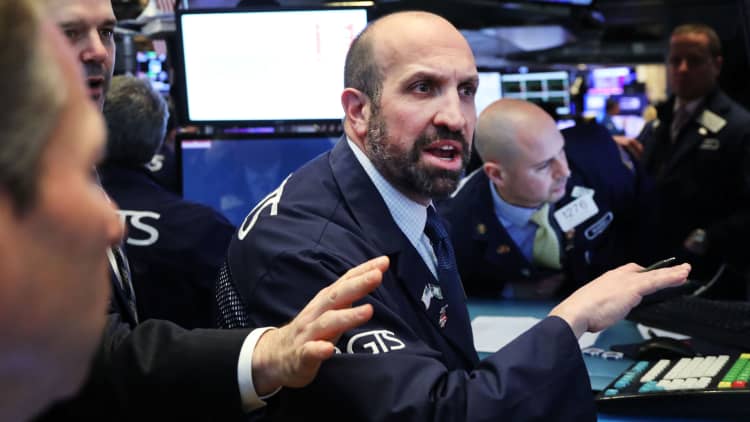Predicting a recession is a notoriously difficult undertaking — both for investors and financial experts.
Yield curve inversions, a rare phenomenon, are often interpreted as a sign of recession. Since the late 1960s, there have been about nine episodes of a protracted yield curve inversion, with each later followed by a slowdown.
Thus, when the yield for 10-year U.S. Treasury notes dipped below that of three-month Treasury bills in late March, it spurred much debate about whether the next recession is looming. According to the Federal Reserve Bank of New York, there is a 25% probability of a U.S. recession in the next 12 months, based on Treasury spreads.
Different take
We beg to differ. The outlook for the global economy, and in turn financial markets, may not be nearly as bleak as the yield curve suggests.
We estimate the probability of a recession in the U.S. at less than 10% in the next 12 months, less than 20% in two years and just over 30% in three years. Contrary to commonly used models such as that of the New York Fed, our model does not include market data but focuses on structural macro data such as consumption and income balances and central bank accommodation.
The yield curve is clearly an important indicator to look at, though it does not pinpoint the precise timing of a recession. The yield curve inversion between July 2000 and January 2001, for example, was followed by a U.S. recession between March and November 2001. The yield curve inverted again in July 2006 to May 2007 ahead of the global financial crisis in the autumn of 2008.
As the circumstances of each recession are different, it is prudent to look at the bigger picture. First, certain conditions have changed over the past decade: Following the 2008 financial crisis, major central banks introduced significant quantitative easing measures that have moved bond markets and yields to levels where an inversion of the yield curve is more likely now than in previous economic cycles. This diminishes the role of yield curve inversions as a recession bellwether.
Furthermore, other structural macroeconomic factors can potentially signal a recession. It is therefore important to look at labor markets, corporate and consumer debt, the monetary policy of major central banks, and the state of the Chinese economy, to name just a few. None of these signals currently point to an impending downturn.
Shifting picture
So where does this leave the global economy? It is in the late phase of an extended economic cycle, and global growth should reaccelerate in the second half of 2019, providing late-cycle opportunities for investors.
The good news for investors is that the clear uptrend we saw in financial markets during the first quarter should continue in the coming months. This view is based on changes in underlying conditions that have altered the big picture in recent months.

The most noticeable shift has been in U.S. monetary policy. While U.S. labor markets remain strong, the U.S. Federal Reserve has signaled that it will not hike further this year, while the European Central Bank has also put rate hikes on hold. The Fed's new policy of patience came after a historically turbulent fourth quarter for financial markets in 2018 as a number of issues — slumping global industrial production, Brexit, the U.S.-China trade war, and a hawkish Fed — scared off investors.
At the same time, the Chinese economy appears to be on the mend. The latest Purchasing Managers' Index in China rose above 50 to enter expansionary territory for the first time in four months, with new orders and purchase volumes advancing. Such improvements indicate that the Chinese government's fiscal and monetary stimulus is helping to strengthen the economy. Any resolution in the current U.S.-China trade dispute would provide additional support. As China's economy picks up steam, other economies, including the export-oriented euro zone, should improve as well.
Upside ahead
These combined factors should bode well for financial markets and risky assets in particular in coming months. Equities, real estate and commodities all stand to benefit. For the investors who missed the first-quarter rally, there should be future opportunities to participate in rising markets. Any small correction in equities in the coming months could be viewed as an opportunity to re-enter the market.
Investors now find themselves back to where they were in the fall of 2018 — before the fourth-quarter correction — when U.S. equity markets were hitting all-time highs. Economic cycles do not last forever. But for now, focusing on the likely upside ahead should prove rewarding.
—Michael Strobaek is the global chief investment officer at Credit Suisse.

